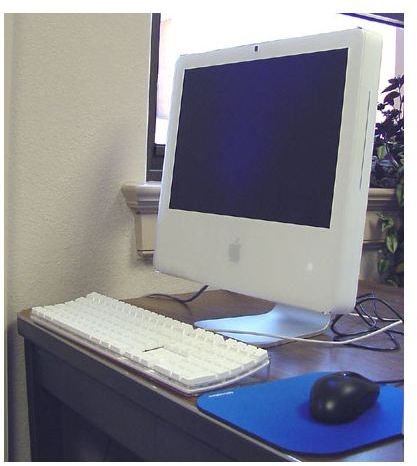What to Do if Your Macintosh Os X Computer Won't Start Up: Fatal Signal Fixes
While current Intel-powered Apple Mac computers have a limited selection of errors that they can be affected by, the older PowerPC devices had a wider selection of regular complaints that could bring computing to a halt.
One of the reasons Apple opted to switch to Intel processors in favor of the PowerPC variety was to overcome some of these problems, and thanks to a slow transition between the two architectures, the G5 range of Apple Macs became available not long before the first Intel devices, and as a result these reasonably powerful computers are still in use.
There is one error that is quite common to this generation of Apple Macs, it is one concerning a “fatal signal” that results in the Mac OS X computer refusing to start-up. The reasons behind this can be quite surprising and might result in some expenditure to repair the problem, if you’re not able to follow the steps below…
How the Error Occurs
You might not even know that any problem has occurred until you switch on your Mac and see the fatal signal error. This might result from shutting down following a system crash, or it might just happen out of the blue.
In some cases, the usual startup screen with the Apple logo and the spinning wheel will appear, but in others you should see the following white text on a black background:
Jul 6 12:31:12 init: fatal signal: Segmentation fault
In some cases further information will be offered, such as debugging details and references to the “Darwin kernel”, but overall the error message is pretty unfriendly to anyone with limited experience of such faults.
Image credit: Wikimedia Commons/DaemonNoire
Forcing Your Mac to Boot Correctly
Different methods can be used to resolve this issue, all of which involve forcing your Mac to boot in a non-standard way; various power-on commands are available for Macs running OS X.
Begin by inserting the Apple hardware test disk and holding X as you boot your computer, which will force a check of your hardware. Any problems will be listed here – note that if this is bad news, your Mac may need replacing.
Various keyboard shortcuts are included in Mac OS X to allow you to boot your computer with additional or few functions. For instance, you can hold down the SHIFT key while pressing the power button to start your Mac in safe mode, and in some cases this might work.
You might also try resetting the PRAM, the temporary memory area that stores various settings for your Mac. Resetting is done by first ensuring that your Mac is powered off (perhaps removing the power cable for a few seconds) and then, with the APPLE, OPTION, P and R keys all depressed simultaneously (small-handed people may need assistance at this stage) press and hold the power button to start your Mac.
Another trick with the power cable is to reset the SMU/PMU, which can be done by disconnecting your Mac from the mains for two or so minutes. Booting your Mac after this might prove successful, but if not, don’t worry, as there is another solution.
Fixing Fatal Signal Errors with a Second Mac
If another Apple Mac G5 device is available, you should be able to connect it to your Mac in order to repair your computer.
This can be done either via a suitable Ethernet cable or by connecting the computers via Firewire cable and booting the second Mac G5 in Target Firewire mode. Once booted, you can then use Settings > Disc Utility to scan and repair the hard disk.
At this stage, assuming no errors were found in the hardware test earlier, a faulty or temperamental hard disk drive could be the problem. You might opt to source a replacement disk and reinstall Mac OS X from scratch. If this is the choice you make, you would do well to backup any vital data while you still have the two computers connected!
Checking Your Mac’s Memory
If any of the above methods failed, now would be a good time to focus on your Mac G5 memory modules. Depending upon whether you’re using a Power Mac, iMac or MacBook there will be a different process involved, but checking that the modules are correctly seated and that they work in other devices is vital at this stage.
Any problems with the memory modules that you discover now should be addressed, and this will usually require you to source replacements. There are various ways that you can do this, from visiting www.crucial.com to visiting eBay or a Mac components dealer.
If you still experience problems, then the best solution would be to contact an approved Mac repair agent.
References
- Author’s own experience.
- MacForums, Can’t Startup PowerMac G5
